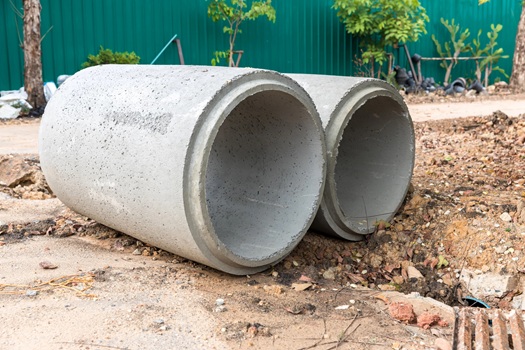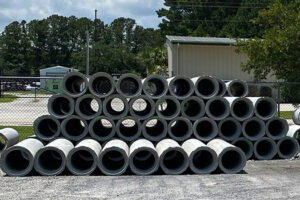
When it comes to managing water flow safely and efficiently, concrete drainage pipes remain one of the most trusted solutions across both residential and commercial construction. These pipes have long been the backbone of reliable drainage systems due to their strength, longevity, and resistance to environmental stress. Whether you’re working on a highway project, developing a neighborhood, or simply curious about infrastructure basics, understanding why builders prefer concrete helps you make more informed choices.
Unlike some newer materials, concrete has proven itself over decades—and even centuries—in real-world conditions. But why are these pipes still in high demand, even with more lightweight or flexible options on the market today? Let’s explore what makes them stand out.
Why Concrete Drainage Pipes Are Built to Last
One of the most compelling reasons contractors and engineers continue to choose concrete drainage pipes is because of their exceptional durability. Most of these pipes last over 50 years, and in many cases, they continue functioning well beyond that. This goes beyond marketing—it reflects proven results supported by field data and long-standing installations.
Because concrete is rigid and strong, these pipes can handle heavy loads and intense conditions without collapsing or warping. For roadways, industrial areas, or locations exposed to severe weather, that level of performance is not just useful—it’s necessary.
In addition to their lifespan, concrete pipes are also low-maintenance. Once installed properly, they typically don’t require much attention. This reduces long-term costs for property owners, municipalities, and developers alike.
The Strength Behind Concrete’s Load-Bearing Ability
Unlike flexible materials, concrete doesn’t rely on the surrounding soil for support. Its strength comes from within. In reinforced versions, steel cages are placed inside the pipe walls, making them suitable for high-load environments like highways, airports, and commercial zones.
This internal strength is especially important in places where soil erosion or shifting ground could compromise other materials. Because concrete drainage pipes can maintain their shape under pressure, they’re less likely to buckle, even when subjected to years of traffic or natural ground movement.
Joint design also plays a critical role. Engineers design concrete pipe joints to be watertight when installed properly, helping prevent infiltration, erosion, and sediment build-up. That level of integrity keeps surrounding soils stable and reduces the risk of pavement failure or sinkholes.
Concrete Drainage Pipes Withstand Harsh Environments

Concrete Pipe in Little River SC
Another reason why these pipes continue to outperform other options is their resistance to extreme conditions. Concrete naturally resists fire, which is an added layer of protection in wildfire-prone areas. It’s also not susceptible to rust, rot, or ultraviolet damage.
Even more important is its ability to resist chemical corrosion. In environments with acidic soil, aggressive water conditions, or industrial runoff, other materials may degrade quickly. Concrete, by contrast, maintains its structural integrity—even when exposed to harsh substances over long periods.
This makes concrete drainage pipes ideal for both urban and industrial settings. They can be used to manage everything from stormwater to wastewater without concern about rapid deterioration.
Versatile Applications Across Every Sector
Because of their strength and durability, concrete pipes are found just about everywhere. You’ll see them buried beneath highways, running through farms, installed under residential driveways, and lined along city streets. Their function may be out of sight, but it’s never out of importance.
In road construction, these pipes control runoff to prevent flooding and damage. On farms, they’re used for subsurface drainage that supports crop health. In neighborhoods, they quietly carry away stormwater to reduce standing water and prevent erosion.
For anyone designing a system that needs to handle large volumes of water over decades—not just years—concrete drainage pipes remain the gold standard.
What to Know Before Installing Concrete Drainage Pipes
Although these pipes are reliable, their weight and rigidity require specific handling. They often need heavy machinery for transport and installation, which adds upfront cost. However, many contractors consider this a worthwhile trade-off, given the reduced maintenance and superior performance they provide over time.
Proper bedding, alignment, and joint sealing are essential to prevent shifting and ensure long-term success. It’s also important to follow local engineering standards for sizing and slope, since water velocity and volume can affect system performance.
With that said, once installed correctly, a concrete drainage system is unlikely to need significant repair for decades—something few other materials can claim.
When Concrete Beats Plastic or Metal
Plastic can warp under heat or collapse under pressure. Metal may corrode in wet or salty conditions. But concrete drainage pipes stay consistent, even in the face of those same threats. That’s why they continue to be specified in government and commercial projects around the world.
The upfront investment may be higher, but the long-term savings on repairs, replacements, and disruptions often outweigh that initial cost.
Kidd Construction Supply offers professional-grade concrete drainage pipes for a wide range of infrastructure and development projects. From highways and industrial zones to residential drainage systems, their products meet the highest standards for strength, safety, and longevity. Backed by expert support and dependable delivery, they’re the trusted supplier for long-term drainage solutions.
Kidd Construction Supply
1057 Redi Mix Rd
Little River, SC 29566
(843) 399-1515
https://www.kiddconstructionsupplies.com/

No comments:
Post a Comment